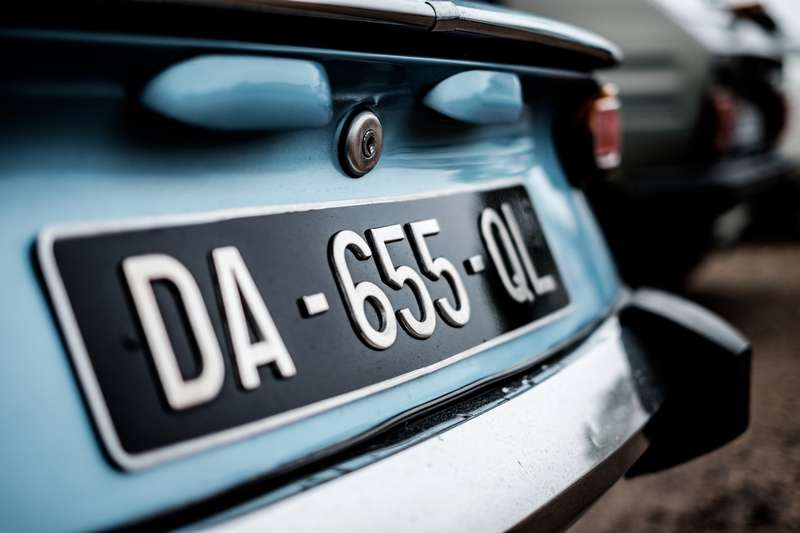Automatic Number Plate Recognition (ANPR) is highly regarded by law enforcement officials for its efficiency and versatility. It is used for parking management, gated housing area surveillance, highway and toll monitoring, and other purposes.

Even though ANPR is a great tool, it may not provide 100% results if installed poorly. It can read vehicle number plates only if you set it up correctly, keeping several factors in mind. So, here are some expert insights to modify your ANPR setup to make it super-accurate.
Why Do We Need A Proper Setup For ANPR accuracy?
The ANPR system reads vehicle number plates by capturing real-time images. However, it might produce hazy, dark, or over-exposed images, thus resulting in inaccuracy and inefficient surveillance. This industry has grown exponentially and has brought certain factors to light. These factors are what affect their accuracy. Camera quality, ANPR engine, and camera setup are the three primary factors that impact the accuracy and success of an ANPR system.
The engine, as well as the camera quality, are preset factors. These cannot be altered too much. This makes the setup the deciding factor for achieving efficiency. Read on to learn more about what contributes to an ideal ANPR camera setup.
Adjust The Camera Zoom To Improve Image Quality
When amateurs handle an ANPR system, they usually make the mistake of capturing wide-angle images. Cameras positioned to take wide-angle shots focus on the entire width of an area instead of focussing on a particular entry or exit point.
Cameras should aim to focus on a smaller area to capture accurate images. You can fix this quickly by adjusting the lens width and positioning of the camera. This will ensure that the license plate is the primary subject in the photograph.
The minimum width required to get a crystal-clear view of specific areas is 40 Pixels. By making modifications to your camera setup, you will achieve better image quality.
Modify The Camera Distance For Better Focus
It is better to keep a minimum distance between the subject (vehicle) and the camera. 35 meters is the ideal distance for an accurate surveillance system. Less distance allows the ANPR camera to focus on the target object instantly. This prevents blurry shots and gives you a sharper image. Remember to physically measure the distance between the ANPR camera and the vehicle to ensure accuracy.
Fix The Camera Angle To Improve Reading
Nortech’s ANPR cameras are engineered to read different kinds of license plates. However, it is always beneficial to position the camera angle appropriately. There are two ways to position the ANPR camera angle. You can set up the camera vertically or horizontally. In either of these positions, you must make sure that the camera is sloped at 45 degrees. This ensures a clear read of the vehicle’s number plate.
Suitable Camera Resolution
Even though you can use any IP camera for an ANPR system, it is better to use a minimum width of 50-100 pixels. This will improve the camera’s reading ability. Each ANPR system should be equipped with megapixels that suit its purpose, such as-
- Parking and Toll Monitoring- 2 MP camera
- Vehicle-Servicing and Logistics- 4 MP camera
- Highway or Main Road Surveillance- 8 MP camera
These guidelines are based on general research. However, you can make it more accurate by capturing some sample images. You can then run these images via the ANPR engine to see if the reading was clear.
ANPR Camera Frames
Camera frames are majorly dependent on the object’s speed at the time of capturing. The image quality you receive from still objects capturing is very different from moving objects. This means that you have to change your camera specifications to match the vehicle speed when the car is still as well as when it’s moving.
The net difference in speed gives us clarity regarding the camera specifications. In cases of a still object, the vehicle’s speed is the net speed. On the other hand, the difference between the vehicle’s speed and your speed is the net speed for a moving object. These calculations help avoid blurry images.
Appropriate Lighting For Better Clarity
Most ANPR systems are well-equipped to click clear images in the dark. However, it is better to make sure that the camera is set up properly. To avoid underexposed or overexposed images, you can set the camera shutter speed according to the lighting condition.
You can even auto-adjust the camera to change its shutter speed based on the change in lighting. Additionally, you can provide a light source that focuses on the entry and exit areas or other specific locations to ensure that there is always enough light on the approaching vehicle.
How else can you improve an ANPR setup?
ANPR can be a complex system to manage if you do not have prior camera settings’ knowledge. Therefore, it is better to be careful of a few things before you activate your system:
- You must keep the Digital Noise Reduction (DNR), Automatic Gain Control (AGC), and the BackLight Compensation (BLC) settings disabled.
- It is not advisable to use the Auto-Focus feature because it may hamper the recognition ability of your camera.
- Set up your system to take pictures in landscape mode. Portraits are not very useful for ANPR.
Summing Up
Many high-security areas like airports, government buildings, and historical places use ANPR systems. It also assists in day-to-day security and surveillance in parking lots, toll gates, highways, and gated residences.
Remember, you should adjust the camera with support from technical staff to avoid mismanaging the ANPR system. This will ensure an accurately installed ANPR for capturing the best quality images.





